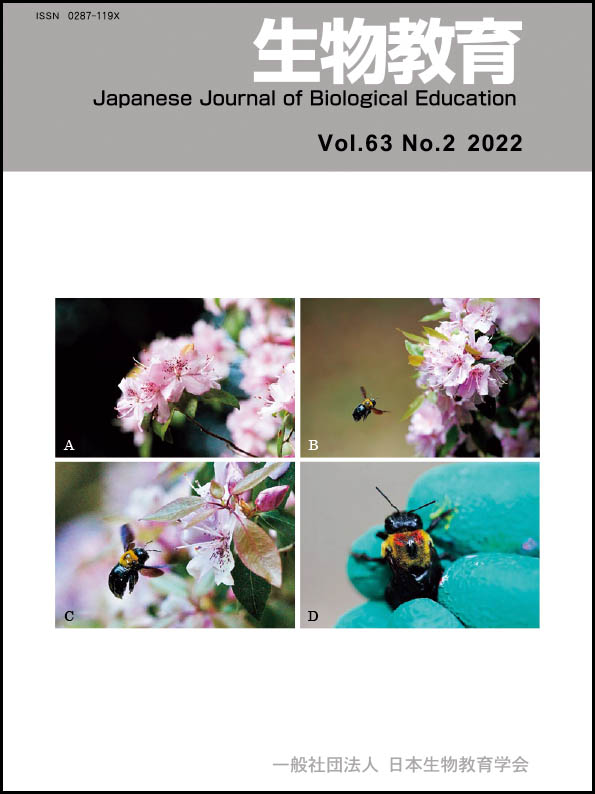Volume 63, Issue 2
Displaying 1-10 of 10 articles from this issue
- |<
- <
- 1
- >
- >|
RESEARCH PAPER
-
2022 Volume 63 Issue 2 Pages 74-82
Published: 2022
Released on J-STAGE: August 23, 2022
Download PDF (6696K)
RESEARCH NOTE
-
2022 Volume 63 Issue 2 Pages 83-90
Published: 2022
Released on J-STAGE: August 23, 2022
Download PDF (1537K)
RESEARCH NOTE
-
2022 Volume 63 Issue 2 Pages 91-96
Published: 2022
Released on J-STAGE: August 23, 2022
Download PDF (4052K) -
2022 Volume 63 Issue 2 Pages 97-103
Published: 2022
Released on J-STAGE: August 23, 2022
Download PDF (6741K)
SPECIAL FEATURE ARTICLE: SBSEJ Symposium
-
Practice of collaborative projects between elementary, junior high and high schools and universities2022 Volume 63 Issue 2 Pages 104-105
Published: 2022
Released on J-STAGE: August 23, 2022
Download PDF (1196K) -
2022 Volume 63 Issue 2 Pages 106
Published: 2022
Released on J-STAGE: August 23, 2022
Download PDF (2883K) -
Creation of problem-solving learning utilizing cooperation between junior high school and university2022 Volume 63 Issue 2 Pages 107
Published: 2022
Released on J-STAGE: August 23, 2022
Download PDF (1431K) -
2022 Volume 63 Issue 2 Pages 108
Published: 2022
Released on J-STAGE: August 23, 2022
Download PDF (2871K) -
2022 Volume 63 Issue 2 Pages 109
Published: 2022
Released on J-STAGE: August 23, 2022
Download PDF (2379K) -
2022 Volume 63 Issue 2 Pages 110
Published: 2022
Released on J-STAGE: August 23, 2022
Download PDF (1258K)
- |<
- <
- 1
- >
- >|
